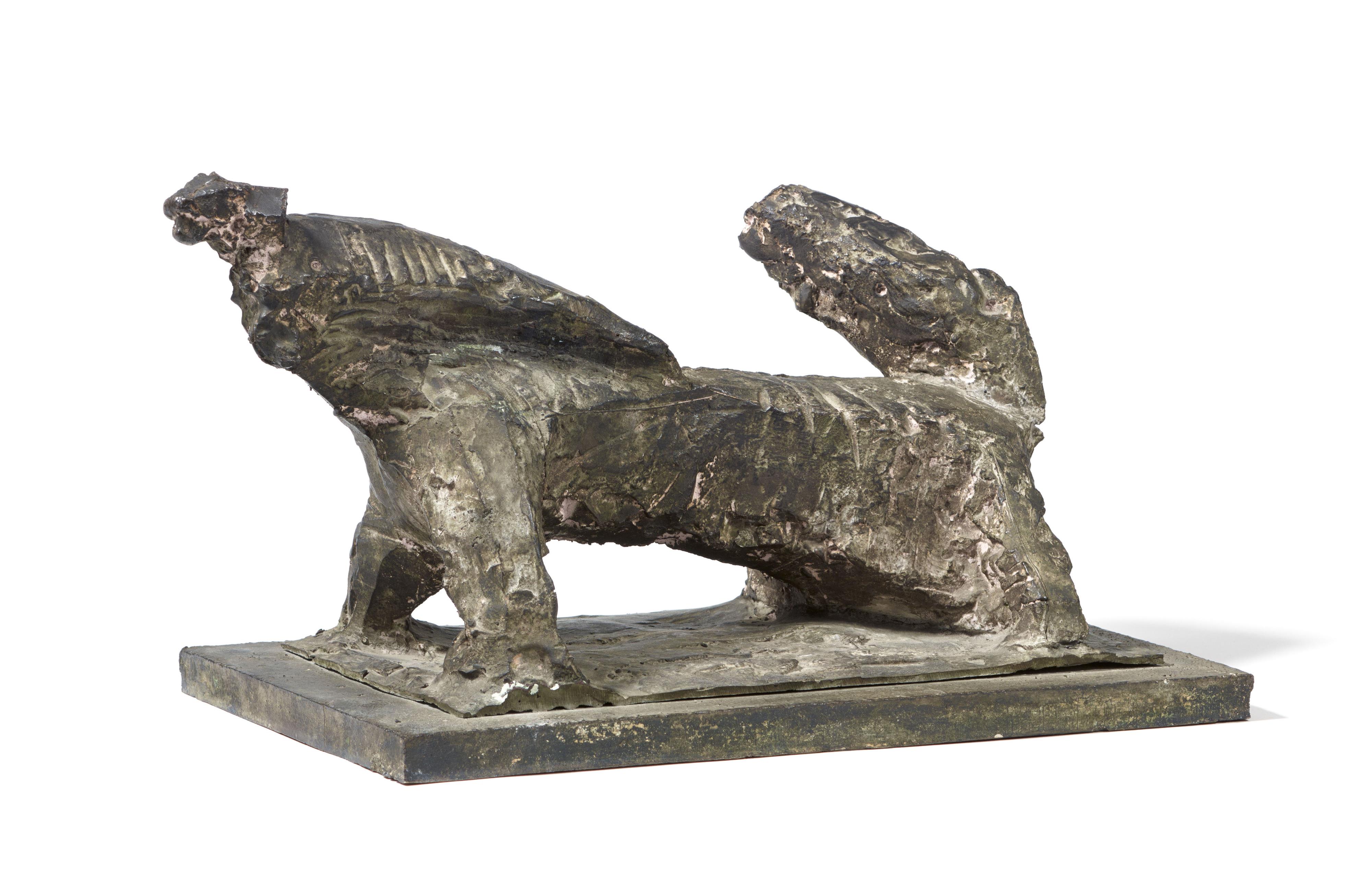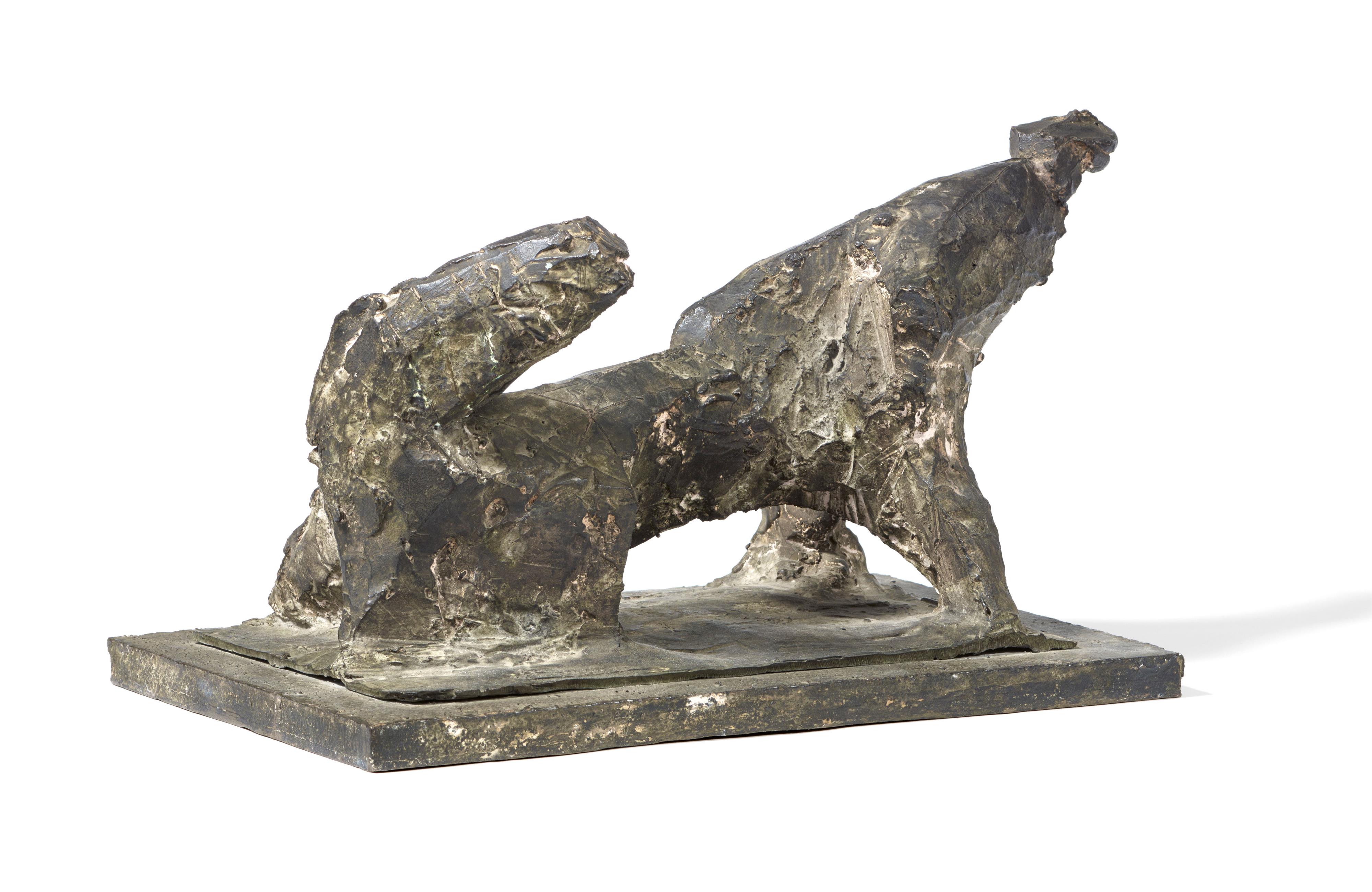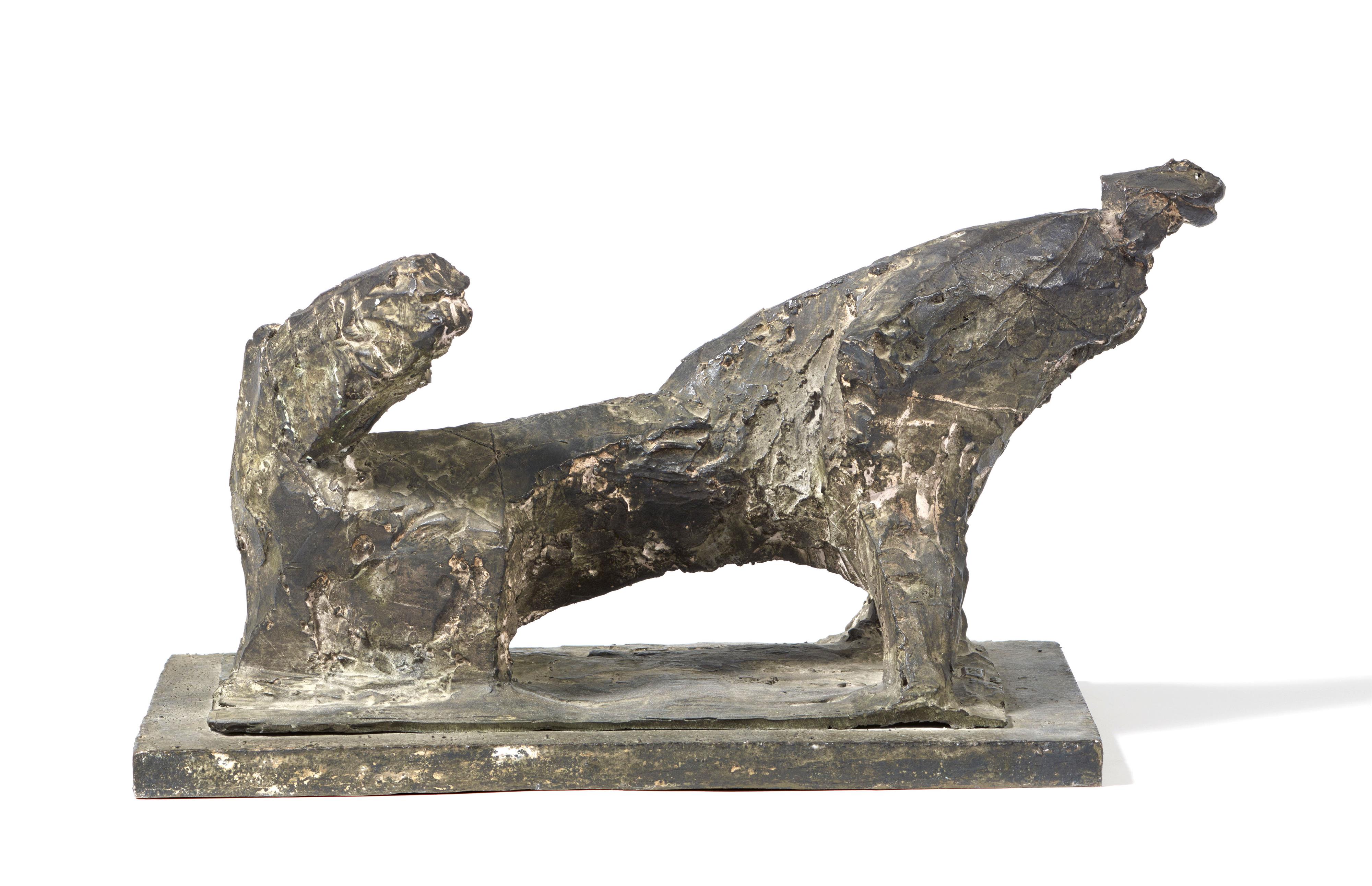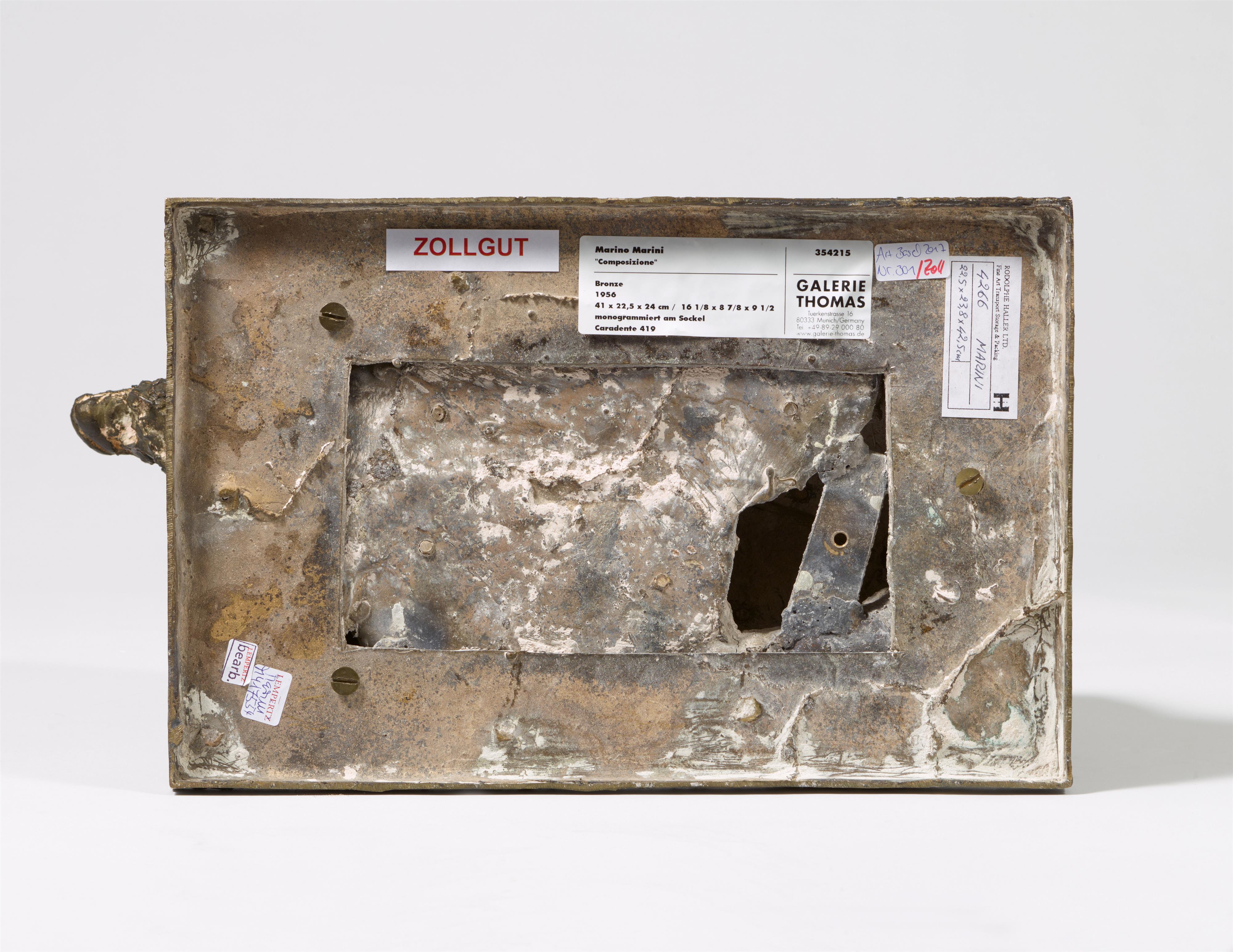Marino Marini
Composizione
1956
Bronze. Height 22.5 cm. Width 42 cm. Depth 23.8 cm. Monogrammed 'MM' to narrow side of plinth and barely legibly numbered '3/6' to long side. One of five casts, according to cat. rais. Caradente. - Anthracite-olive-coloured, partly lighter patina.
The painter and sculptor Marino Marini was born in Pistoia, Tuscany, in 1901 and his oeuvre revolves around two central themes: first, the world of female dancers and acrobats and, second, riders with their horses. The 1956 sculpture of a fallen horse with rider offered here comes from the latter group, which was particularly important for his late work. Due to its very advanced level of abstraction, it bears the title “Composizione”.
It was chance circumstances that introduced Marini to the horse-and-rider motif around 1930. When he was appointed to a teaching position at the Scuola d’Arte di Villa Reale in Monza, his first studio was located in direct vicinity of a stable: “I utilised the easy opportunity”, he writes, “and made drawings and models of horses almost every day. Back then they were still far removed from having a subjective and apocalyptic meaning for me” (cited by Bartsch, in: Marino Marini, Exhib. Cat. Recklinghausen 2003, p. 39). The theme of the horse – with or without a rider – would never relinquish its grip on him. However, following his experiences in the Second World War, the rider groups began to change; from that point onward, he created ill-treated or rearing horses. A new shift occurred around 1955, when Marini began depicting falling horses whose reeling riders are only just able to maintain their grip. In his late work, where these sculptures are referred to as “Guarrieri” (“Warriors”), he usually depicts the horses as completely on the ground. Often the riders’ presence can only be sensed through details, such as their startled gestures. In the work entitled “Composizione”, a schematic image of the horse’s turned head and the figure leaning back in the opposite direction can still be recognised.
Marino experienced two world wars. He felt a need to engage artistically with these and other continuing conflicts. He primarily gave accusatory expression to his dismay through reeling and, later, falling horses: “My rider statues express the fear that the events of my era instil in me. The anxiety of my horses grows with each new work […]. In this way I seek to create a symbol for the final stage in the dissolution of a myth, the myth of the heroic, victorious individual” (cited, pp. 39-40).
Catalogue Raisonné
Carandente 419
Certificate
With a photo-certificate from Maria Teresa Tosi, Comitato Scientifico della Fondazione Marino Marini, Pistoia, from 13 Nov. 2003
Provenance
Collection Drs A.M. Mees, Wassenaar, the Netherlands (probably since the 1950s); private collection, Switzerland (since the 1980s); Galerie Thomas, Munich (gallery label on underside); private collection, Switzerland
Literature
Cf. Franco Russoli, Marino Marini. Pitture e Disegni, Mailand 1963, p. 163, no. 16; Herbert Read/Patrick Waldberg/Gualtieri di San Lazzaro, Marino Marini. Leben und Werk, Frankfurt/Berlin/Vienna 1971, p. 374, no. 347; Carlo Pirovano, Marino Marini. Scultore, Milan 1972, no. 353; Marco Meneguzzo, Marino Marini. Cavalieri, Milan 1997, p. 230, cat. no. 98 with ill.
Exhibitions
Cf. Rotterdam 1962 (Boijmans van Beuningen), Nederlanders verzamelen Hedendaagse Kunst, cat. no. 73; Tokyo 1978 (National Museum of Art), Marino Marini, cat. no. 74, p. 118








